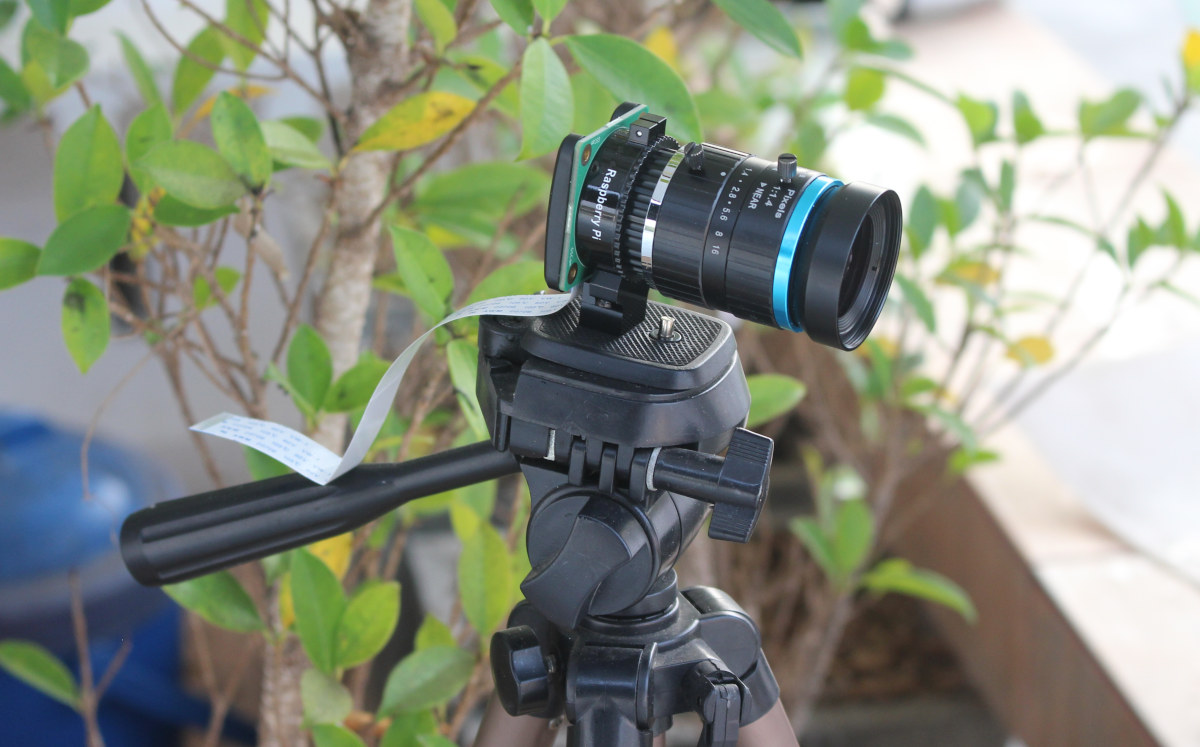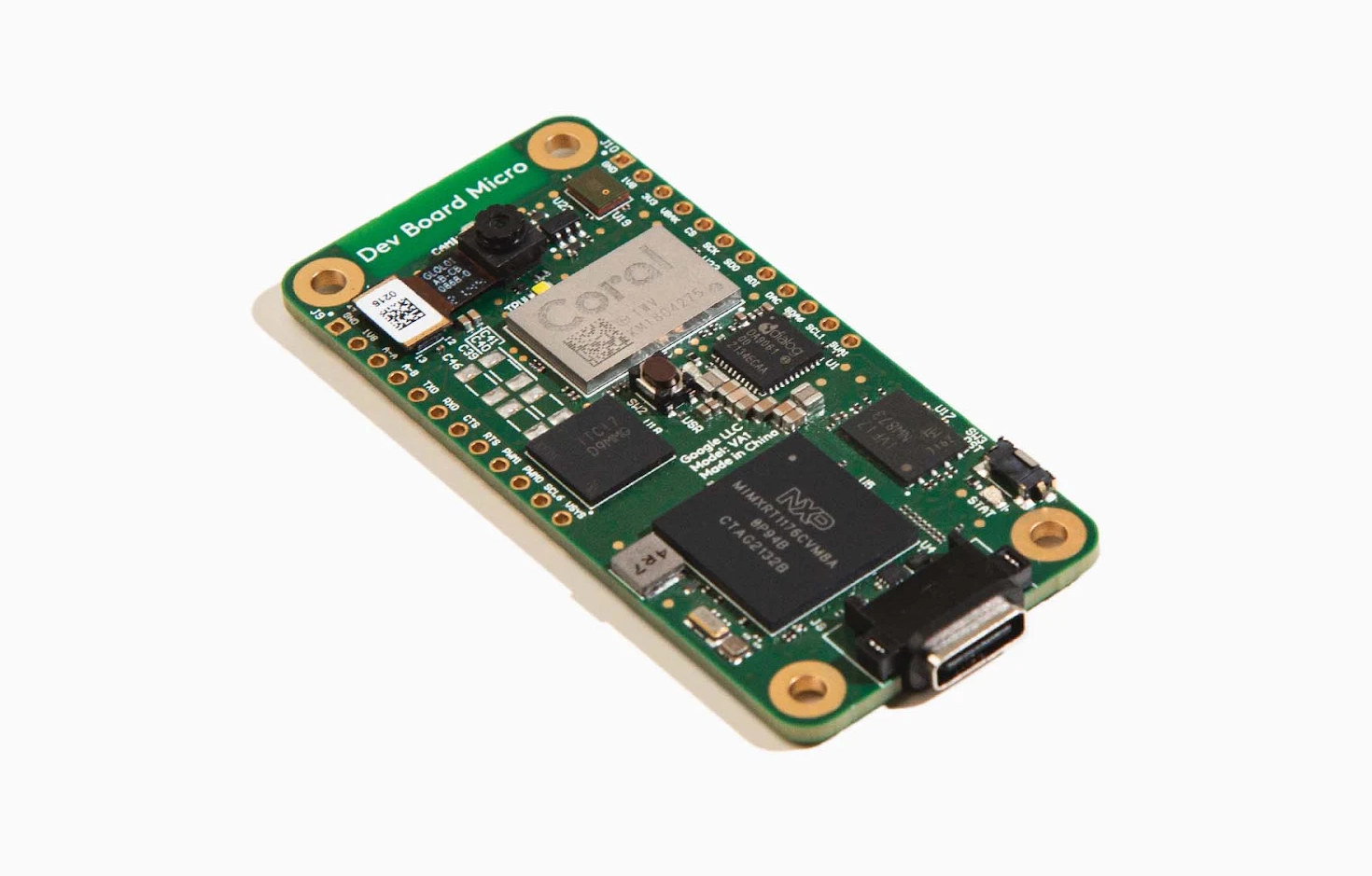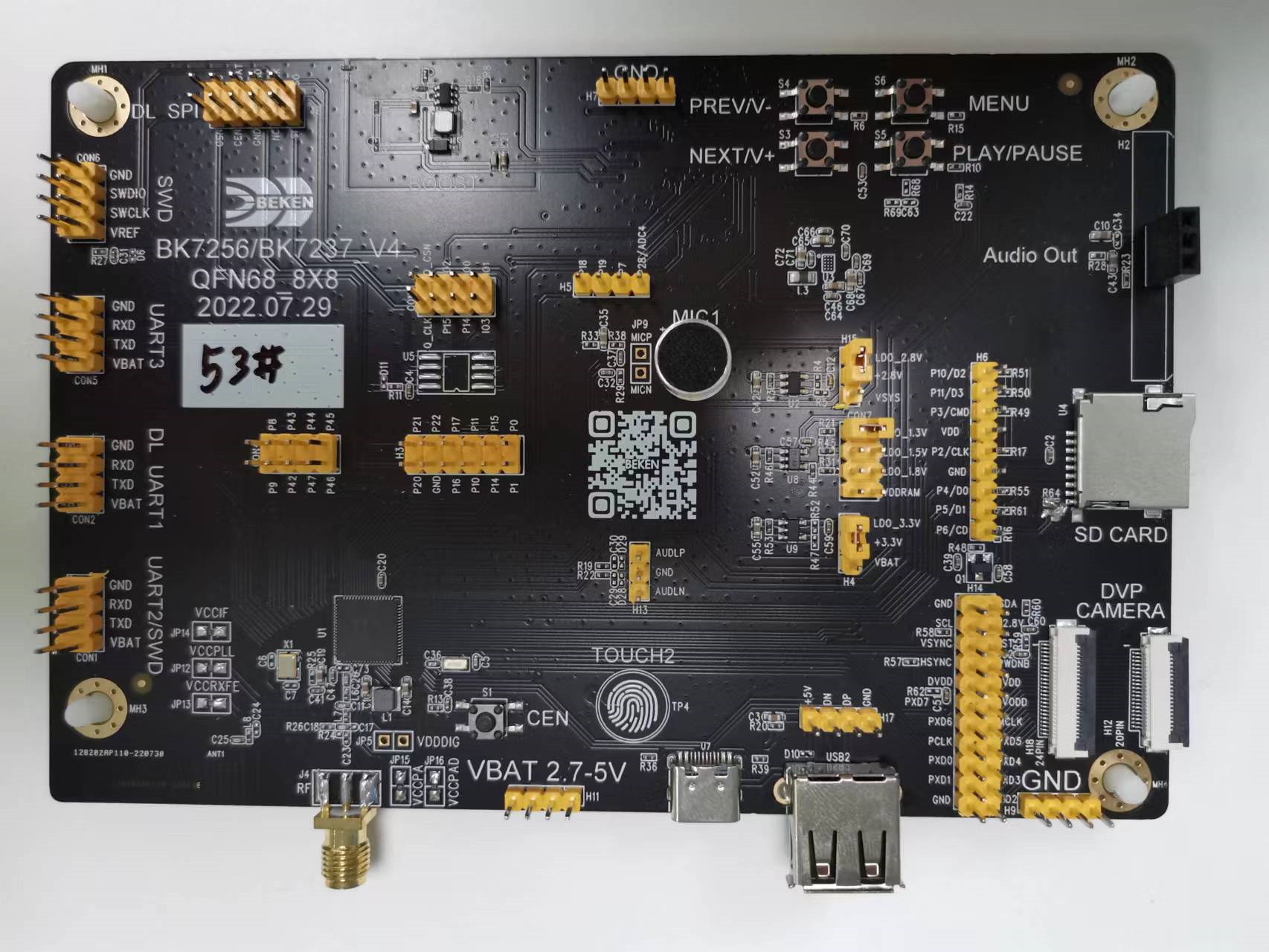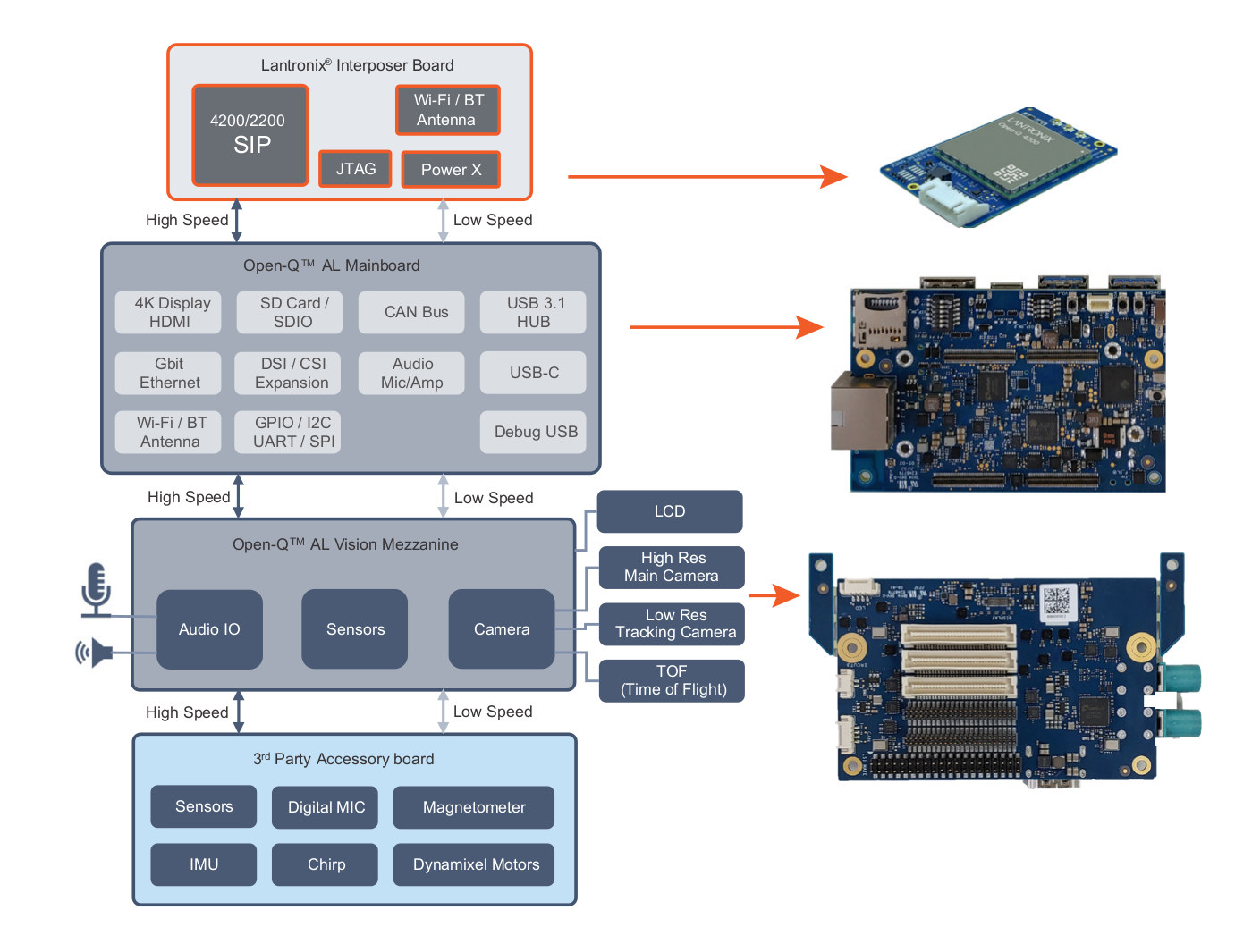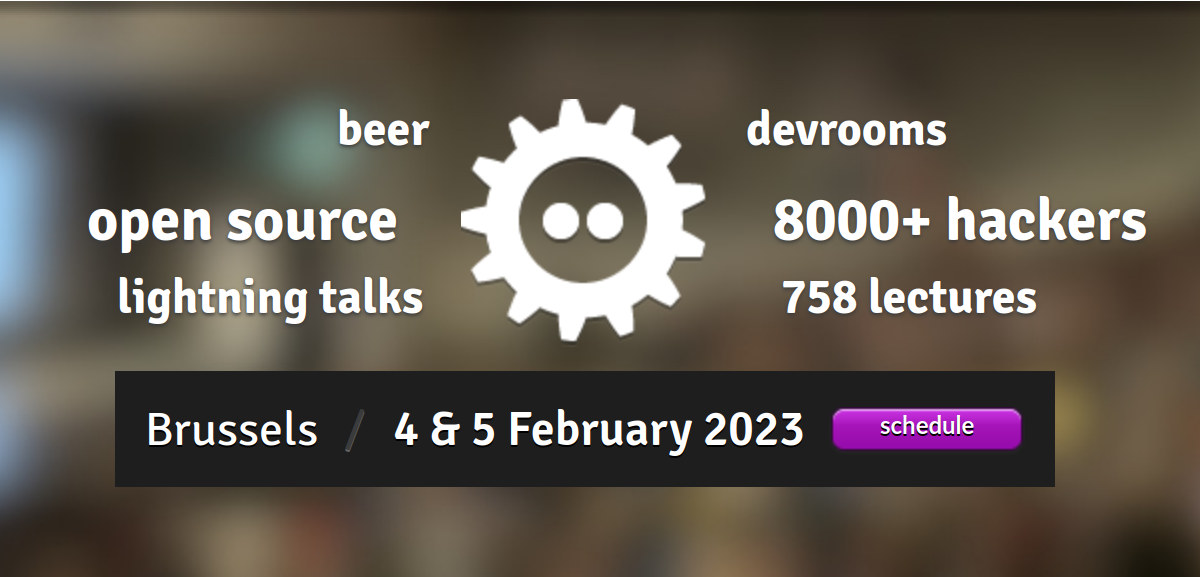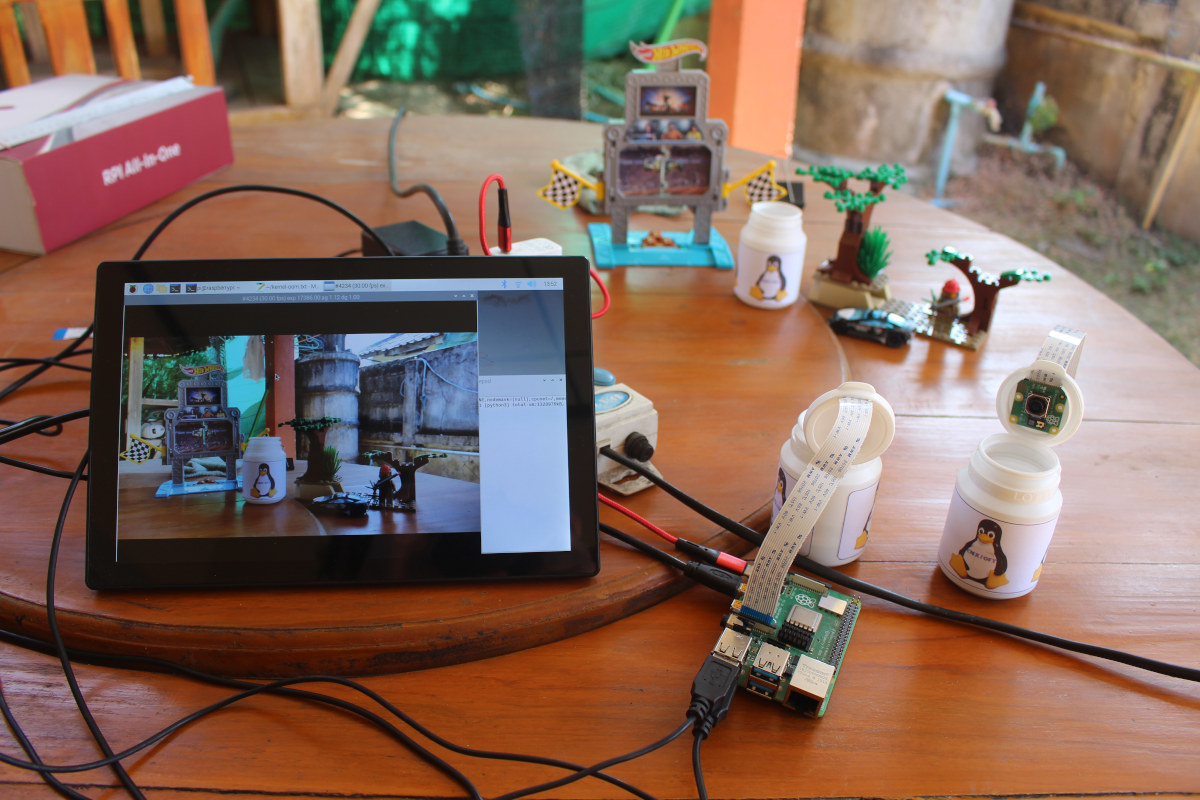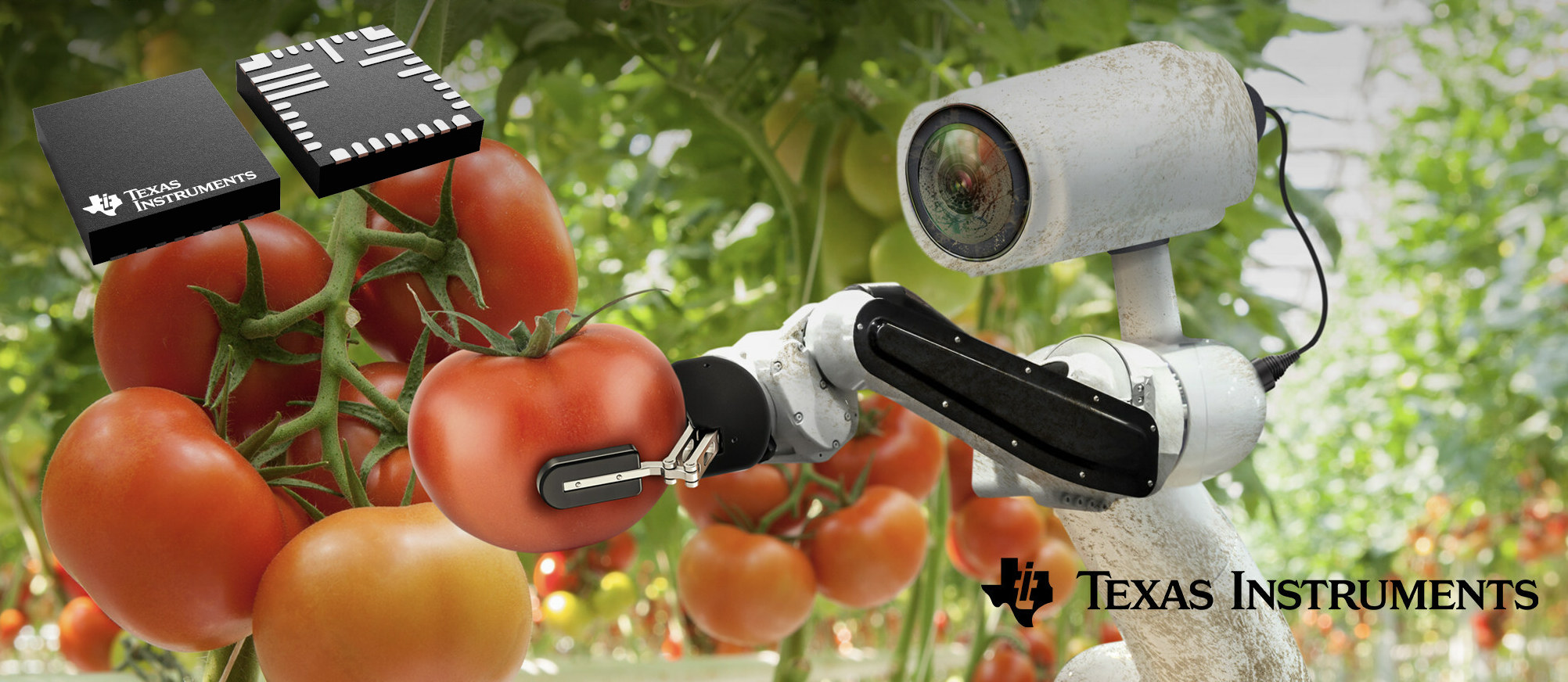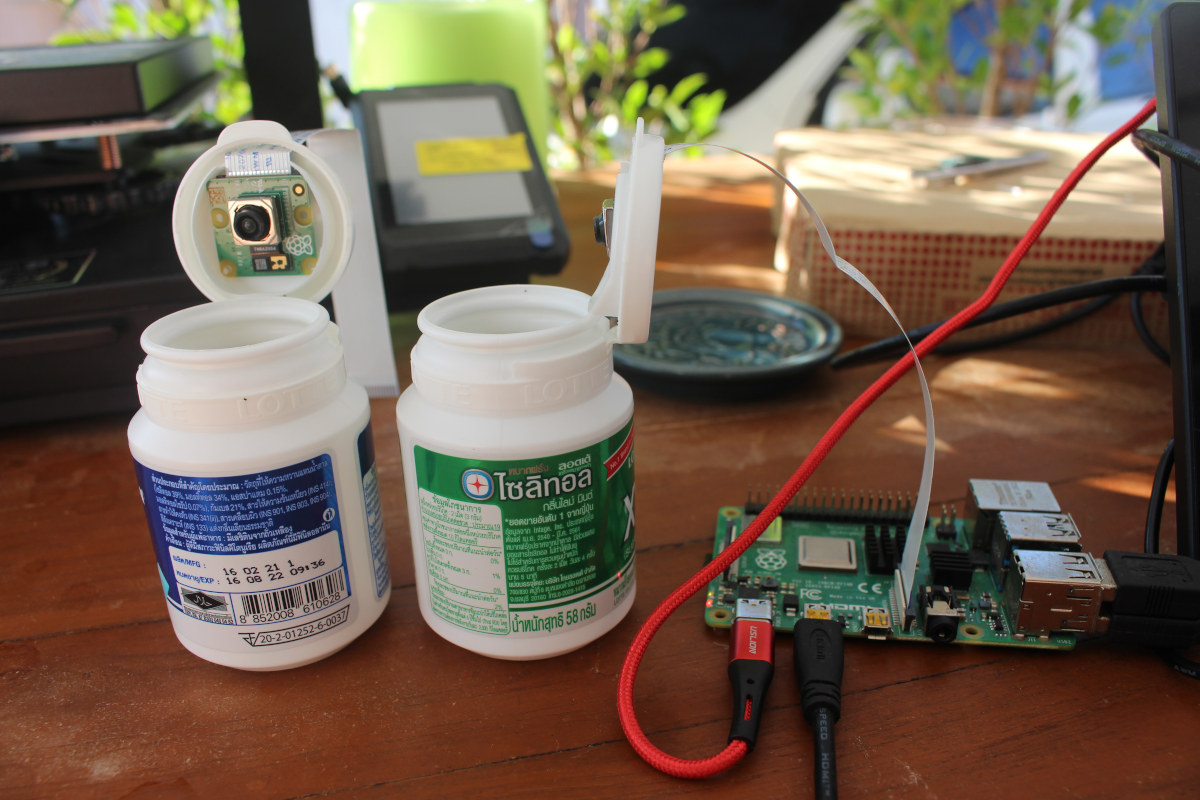Raspberry Pi Trading has just launched the 1.6MP Raspberry Pi Global Shutter Camera which can capture rapid motion without introducing artifacts usually experienced with rolling shutter cameras such as the earlier Raspberry Pi Camera modules, including the latest Raspberry Pi Camera Module 3. The company sent me Raspberry Pi Global Shutter Camera sample together with a 16mm C-mount lens for review, and I’ll report my experience after going through the specifications of the new camera. Raspberry Pi Global Shutter Camera specifications Sony IMX296LQR-C Sensor Resolution: 1.58 megapixels (color) Sensor size: 6.3mm sensor diagonal Pixel size: 3.45μm x 3.45μm Output – RAW10 Back focus length of lens – Adjustable between 12.5 and 22.4mm Lens standards – CS-Mount or C-Mount (C-CS adapter included) Integrated IR cut filter (can be removed permanently if needed) Tripod mount – 1/4”-20 Dimensions – 38 x 38 x 19.8mm (29.5mm with adapter and dust cap) Weight – […]
Coral Dev Board Micro combines NXP i.MX RT1176 MCU with Edge TPU in Pi Zero form factor
Coral Dev Board Micro is the latest iteration of Google’s Edge AI devkit with an NXP i.MX RT1176 Cortex-M7/M4 crossover processor/microcontroller coupled with the company’s 4 TOPS Edge TPU, a camera, and a microphone in a board that’s about the size of a Raspberry Pi Zero SBC. The new board follows the original NXP i.MX 8M-based Coral Dev board that was introduced in 2019, and Coral Dev Board mini based on MediaTek MT8167S processor launched in 2020, and keeps with the trend of providing more compact solutions with lower-end host processors for edge AI. Coral Dev Board Micro specifications: MCU – NXP i.MX RT1176 processor with an Arm Cortex-M7 core @ up to 1 GHz, Cortex-M4 core up to 400 MHz, 2MB internal SRAM, 2D graphics accelerators; System Memory – 512 Mbit (64 MB) RAM Storage – 1 Gbit (128 MB) flash memory ML accelerator – Coral Edge TPU coprocessor […]
Beken BK7256 320 MHz dual-core RISC-V IoT MCU offers WiFi 6, Bluetooth 5.2, JPEG video encoder/decoder
Until now, I had only heard about Beken Bluetooth audio chips, but I’ve just been informed the company is also making WiFi chips such as the BK7256 that are notably found in some Tuya Smart Home modules. Beken offers both RISC-V and Arm WiFi and Bluetooth chips with features summarized as follows: BK7235 single-core RISC-V MCU up to 320 MHz with 2.4 GHz WiFi 6 802.11ax and Bluetooth 5.2 LE, 4MB flash, 512KB SRAM, optional 4MB PSRAM BK7236 dual-core Arm MCU up to 120 to 240 MHh with 2.4 GHz WiFi 6 802.11ax and Bluetooth 5.3 dual mode, 4MB flash, 512KB SRAM, optional 4MB PSRAM BK7237 dual-core RISC-V MCU up to 320 MHz with 2.4 GHz WiFi 6 802.11ax and Bluetooth 5.2 dual mode, 4 or 8MB flash, 512KB SRAM, optional 4MB PSRAM BK7256 dual-core RISC-V MCU up to 320 MHz with 2.4 GHz WiFi 6 802.11ax and Bluetooth 5.2 […]
Qualcomm-based Open-Q 2290CS and 4290CS SIPs target industrial IoT and machine vision applications
Lantronix has just unveiled two new System-in-Packages (SiP) with the entry-level Open-Q 2290CS SIP based on Qualcomm QCS2290 quad-core Cortex-A53 processor designed for industrial IoT applications and safety vehicle equipment control, and the pin-compatible, mid-range Open-Q 4290CS SIP based on Qualcomm QCS4290 octa-core Kryo 260 CPU for applications requiring artificial intelligence and machine learning capabilities. The Open-Q 2290CS module comes with 2GB LPDDR4, 16GB eMMC flash, WiFi 5 and Bluetooth 5.0 connectivity, while the Open-Q 4290CS module is equipped with up to 6GB LPDDR4, up to 256GB eMMC flash., and Wi-Fi 5 with some Wi-Fi 6 features (TWT & 8SS), and Bluetooth 5.1. Lantronix also offers the Open-Q AL2 development kit supporting either both SIP modules for evaluation and rapid prototyping. Open-Q 2290CS – Qualcomm QCS2290 SiP Specifications: SoC – Qualcomm QCS2290 quad-core Cortex-A53 processor at up to 2.0 GHz with Adreno 702 GPU at 845 MHz with support for […]
FOSDEM 2023 schedule – Open-source Embedded, Mobile, IoT, Arm, RISC-V, etc… projects
After two years of taking place exclusively online, FOSDEM 2023 is back in Brussels, Belgium with thousands expected to attend the 2023 version of the “Free and Open Source Developers’ European Meeting” both onsite and online. FOSDEM 2023 will take place on February 4-5 with 776 speakers, 762 events, and 63 tracks. As usual, I’ve made my own little virtual schedule below mostly with sessions from the Embedded, Mobile and Automotive devroom, but also other devrooms including “Open Media”, “FOSS Educational Programming Languages devroom”, “RISC-V”, and others. FOSDEM Day 1 – Saturday February 4, 2023 10:30 – 10:55 – GStreamer State of the Union 2023 by Olivier Crête GStreamer is a popular multimedia framework making it possible to create a large variety of applications dealing with audio and video. Since the last FOSDEM, it has received a lot of new features: its RTP & WebRTC stack has greatly improved, Rust […]
Raspberry Pi Camera Module 3 review – HDR, autofocus, wide angle, and NoIR camera
A few days before launching the Raspberry Pi Camera Module 3 with HDR and autofocus, Raspberry Pi Trading asked me whether I would be interested in reviewing the new modules, and sent me three samples: the standard module, the Raspberry Pi Camera Module 3 Wide, as well as the NoIR version that lacks an IR filter and is better suited for night shots. It took a full week for DHL to send the package to my house, but I’ve now had time to review the new Raspberry Pi Camera Module 3, mostly with libcamera, but also Picamera2, focusing on the new features such as HDR, autofocus, and wide angle. I also had a quick try at the Raspberry Pi Camera Module 3 NoIR but without IR lights. Regular readers know I had already made some DIY camera mounts using empty gum bottles, and I just replaced the Lotte XYLITOL stickers […]
TI unveils ULC1001 ultrasonic lens cleaning chip for self-cleaning cameras
Texas Instruments (TI) has introduced the ULC1001 digital signal processor (DSP) ultrasonic lens cleaning (ULC) technology designed – when combined with DRV2901 piezo transducer driver – for self-cleaning camera systems to quickly detect and remove dirt, ice, and water using microscopic vibrations. Cameras used in the automotive, industrial, robotics, and smart farming industries may require cleaning from time to time and that usually means manual cleaning leading to potential downtime, higher maintenance cost, and so on. It could also be done through mechanical parts but that adds further complexity to the system, so instead, Texas Instruments ULC1001 and DRV2901 combo enables cameras to rapidly self-clear contaminants using vibrations to eliminate debris. The datasheet describes the ULC1001 as a “Configurable Ultrasonic PWM Modulator With I/V Sense Amplifiers” with the following specifications: Integrated Programmable Cleaning Modes Water (expelling) Deice (melting and expelling) Mud (dehydrating and expelling) Auto-Cleaning (detecting and expelling) Custom Cleaning […]
Making a DIY Raspberry Pi camera mount with privacy mode!
I’ve just repurposed an empty XYLITOL gum bottle into a DIY camera mount for the Raspberry Pi Camera Module 3 with privacy mode to boot… In order to avoid confusion, while Xylitol is a chemical compound, it’s also a Japanese brand of chewing gums (Lotte XYLITOL) that is sold in Thailand and other countries. I’m specifically talking about the latter in this post. Raspberry Pi Trading has just sent me a bunch of Raspberry Pi Camera Modules 3 for review, and since I don’t have any camera mount I initially thought maybe I’ll laser cut some mount or use some LEGOs as I did with the e-CAM20_CURB camera for Raspberry Pi 4. But then I saw some empty XYLITOL gum bottles, noticed the cap would open vertically, and it seemed like the modules might fit in there as well. And indeed they do with the Raspberry Pi camera modules snugged […]


